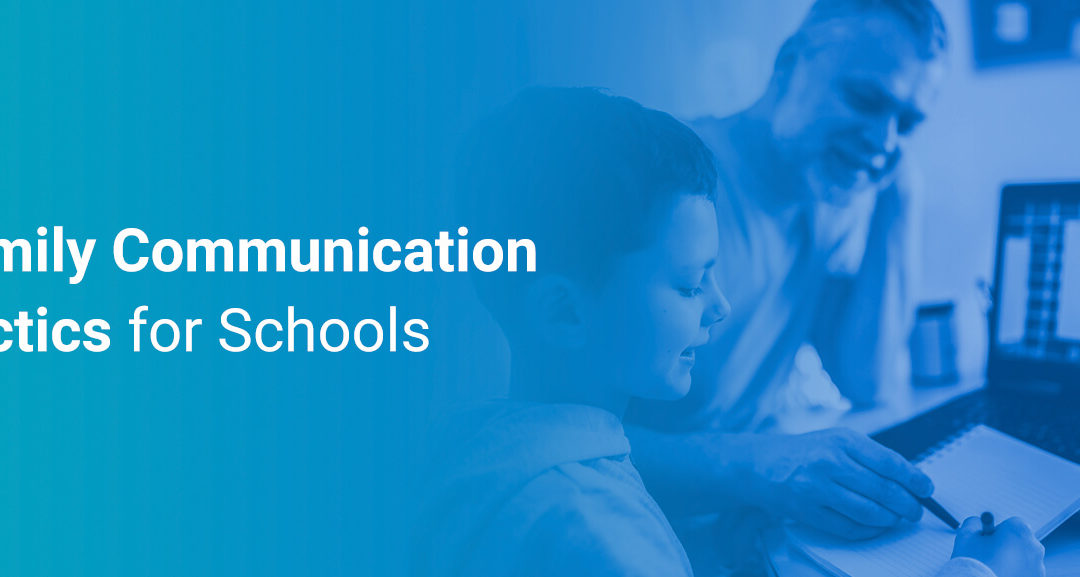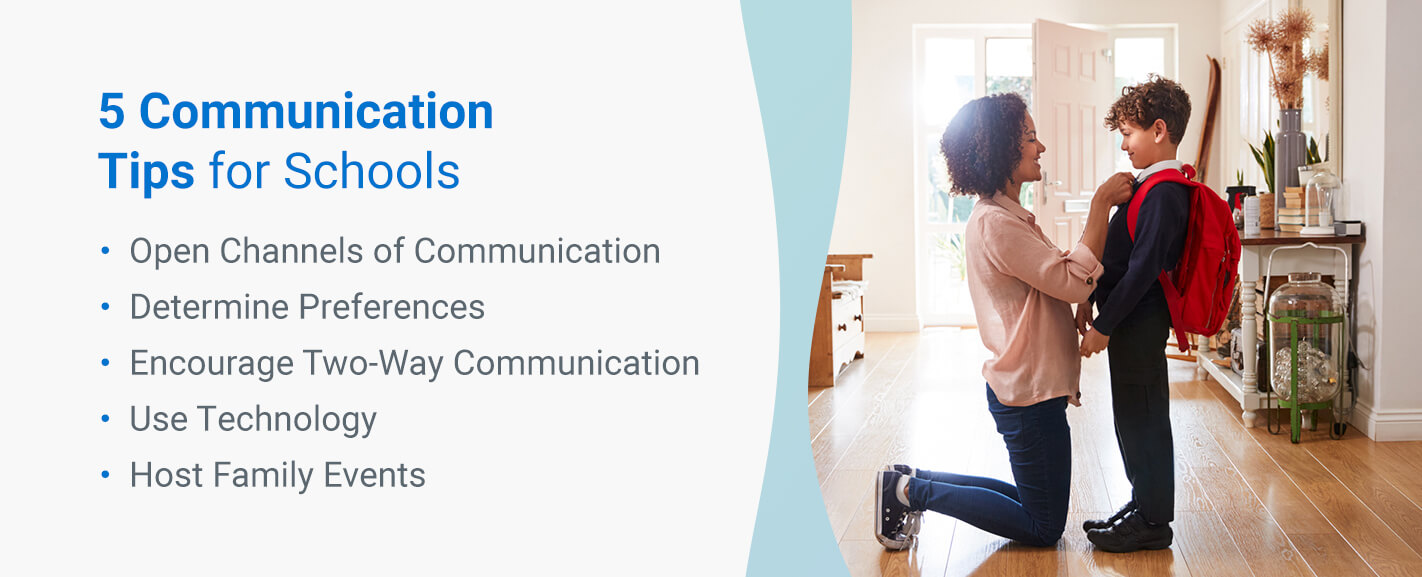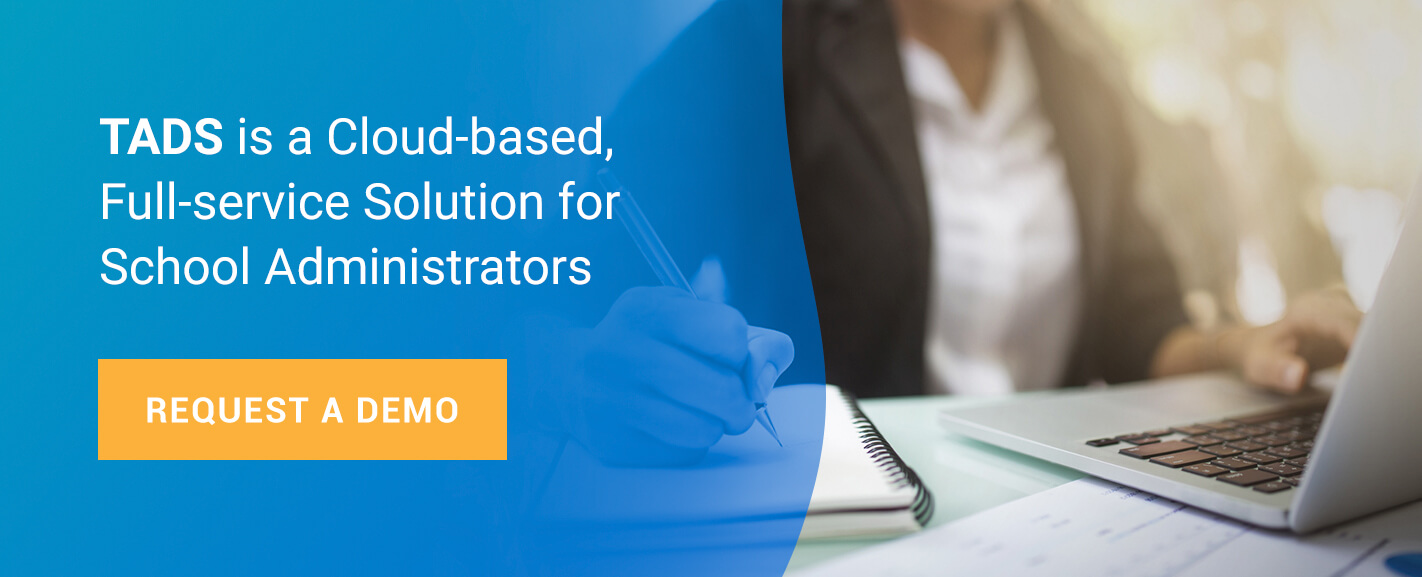
Families must trust their school to keep them informed on any issues, and lines of communication should stay open with teachers, the principal and other staff members. Unfortunately, some school administrators may not proactively foster this relationship, assuming parents will reach out when they need to. Here are our tips for how to communicate with families.
Benefits of Family Communication
Family communication is essential for keeping parents, students and teachers happy and engaged with learning. Encouraging communication between families and schools can bring advantages to everyone involved.
Teachers
Teachers can benefit by having parents’ input on students’ strengths, weaknesses, abilities and behaviors. Asking parents to share information about their children can give teachers a better understanding of how to support them. Teachers also appreciate when parents help their children complete homework and encourage them to study. When parents take a hands-on role in their child’s academic progress, it frees teachers to focus on instruction.
Parents
Studies suggest parental involvement is critical in students’ aspirations and achievements. However, parents usually don’t get to sit in the classroom during the school day, so they rely on their children’s teachers to keep them updated. Most parents are interested in their children’s progress, but don’t have a chance to observe firsthand how their kids are doing. Teachers who open communication with parents invite them to take a more active role in what’s going on with their child at school and understand how they can better support them with homework and other assignments.
Students
When parents are more involved in school activities, students’ academic performance can improve. Parents can increase their children’s chances of short-term and long-term success by helping them develop lifelong learning habits. Teachers will also have more information that will help them support each student.
5 Communication Tips for Schools
Improving communication between families and schools is a goal every school should set. Mutual communication and respect between families and schools will improve the learning environment and student experiences. Here are five ways to enhance your school’s outreach to families.
1. Open Channels of Communication
When implementing new communication tactics, teachers and school administrators should prioritize starting strong. At the beginning of the year, set clear expectations. Let families know how your school will reach out to them, and how they can connect with you. Stress the importance of communication and how students will benefit from increased parental involvement.
Put together a multipronged outreach plan including all the available communications channels. Every time your school sends out information, remember to include a note telling parents how to respond or provide feedback. You can send information home with students, provide it in person at parent-teacher conferences or mail it to parents.
2. Determine Preferences
Not all families will want to communicate the same way. Send an online or physical survey to ask them whether they would prefer to stay in touch by phone, email or text. Be sure to include a question about whether they are more comfortable using a language other than English. Ask how often they want updates on their student’s progress and behavior — but don’t include any frequency less than once a quarter.
3. Encourage Two-Way Communication
School outreach to parents is one thing, but getting parents to respond and participate can be another challenge. It’s critical to encourage communication both ways to help parents engage with their child’s education. Parents can be a valuable asset to students and teachers when they take an active role in the learning environment. Regular conversations with teachers can help parents understand where their child is succeeding and where they may need extra help. When parents know about their child’s assignments, they can help hold the student accountable for getting everything finished and turned in on time.
4. Use Technology
Technology can make school communication tactics easier and more effective. Use email to share weekly or monthly newsletters that include classroom updates, photos, homework assignments and upcoming field trips. Communication software, social media and blog posts are other options teachers can use to stay in touch with families.
Schools can also use technology to help remind parents to reach out. Many parents have busy schedules and may need small prompts about schoolwork and upcoming activities. Teachers can send simple text reminders or short emails to encourage parents to check in with their children about school.
Software, such as our sophisticated family and student portal, can simplify other administrative tasks, too. TADS offers solutions that save your school time and money while supporting your staff.
5. Host Family Events
In-person events are critical for developing relationships between teachers and parents. Class performances, open houses, parent-teacher conferences and other occasions that include parents bolster communication and improve trust. Personal contact is one of the most effective ways to reach families that are uninvolved with or disengaged from schooling. If it isn’t logistically possible to organize in-person events, plan a virtual meeting with each child’s parents.
School-Wide and Student-Specific Communication
Your school’s administrators should regularly communicate with parents about upcoming events and remind them of holidays and teacher in-service training days. Remember to include information on how parents can respond or contribute.
Another essential and often overlooked part of family communication is when a teacher or principal takes time to reach out to parents about their child’s performance or behavior. Parents value specific details about their student’s academic accomplishments, project due dates and upcoming tests.
Choose TADS
TADS is a cloud-based, full-service solution for school administrators. We provide K-12 private schools with admission and enrollment solutions, tuition and billing management and student information systems.
As you work to fill your classrooms and improve the family experience, you need a technology partner to support you. We’ve been helping schools since 1970, and our knowledgeable team members can help you find the right solution for your school. Do you have questions about how we can help you? Contact us today to ask any questions or request a free demo.

